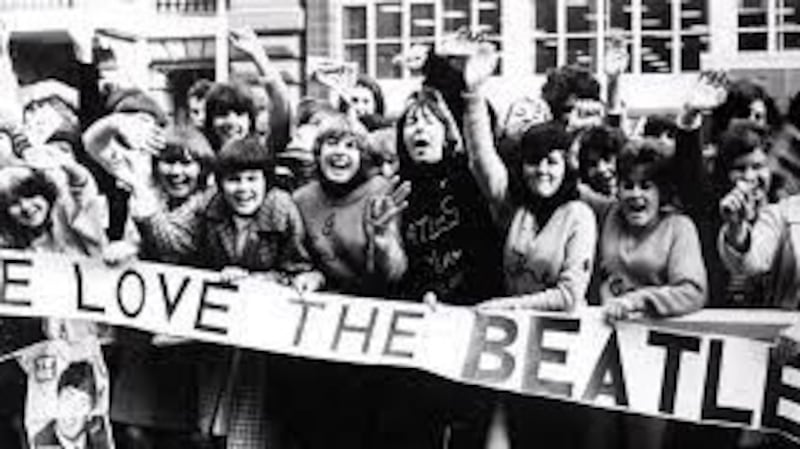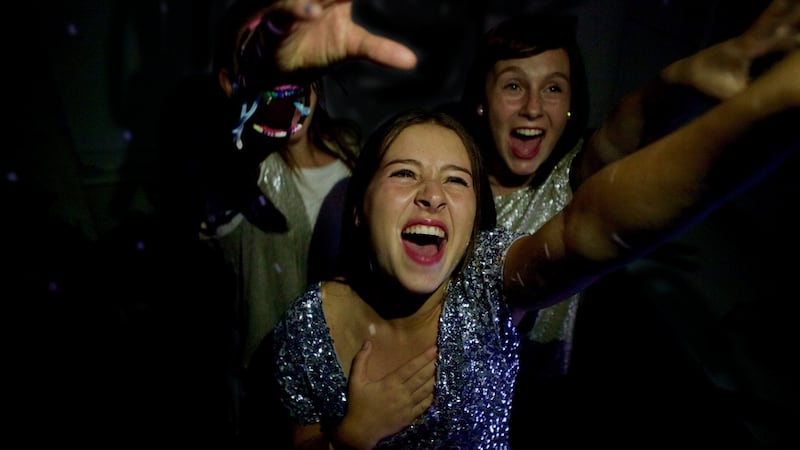Documentarian Jessica Leski was a teenager during the 1990s, a decade when such sleek, harmonised boy bands as: New Kids on the Block, NSync, Backstreet Boys and Boyz II Men dominated the charts. Leski, however, remained immune to their charms, a view she carried well into the 21st century.
In 2012, upon hearing a track by One Direction on the radio, her first thought was: “Do they think we’re idiots? They just repeated the same chorus 10 times over.”
But by the end of the song, she was singing along to the same oft-repeated chorus.
“I fell in love with a boyband for the very first time at the age of 31,” she says. “It was one of the most confusing, surprising and exciting experiences I’d ever had. At the time they called it “the One Direction infection”, and it hit me hard.”
That infection introduced Leski to the wider Directioner community and inspired I Used to Be Normal, a fun and fascinating film about the girls who love boybands.
Filmed over four years, it chronicles obsession through four fans. Elif, from Long Island, is a high-school student who, in common with the director, is obsessed with One Direction when the film begins. Her interest in the quartet has frequently confounded the expectations of her Turkish immigrant family.
“These boys mean a lot to me,” says Elif. “They mean more to me than my family. They’re not even like human beings. Human beings can’t be that perfect.”
Millions of people have witnessed evidence of Elif’s devotion.
“Elif’s friends had uploaded a video they had secretly recorded of her watching a DVD of a One Direction concert,” says Leski. “The clip had gone viral and it’s hard not to be affected by Elif’s reactions – she laughs, she cries, at times she even looks like she’s in physical and emotional pain. And there’s a moment where she is suddenly self-aware and turns to her friends and cries “This is not good. I used to be normal!” It made me feel sad that she was ashamed for having this reaction, that she wanted to be ‘normal’, which I guess means being able to hold in all your feelings.”
Sexual maturity
Elif’s co-stars include Sadia, a journalist in her twenties, who hails from San Francisco and is so enthralled with the Backstreet Boys that she and 2,000 other like-minded fans sailed off on a cruise with the now thirtysomething objects of their affections. It’s a squirm-making experience that prompts Sadia to question her loyalties.
Various psychologists have suggested that girls get together and scream at boys as an expression of their fears about reaching sexual maturity. Sadia’s hilarious fantasies of getting swimming lessons from Backstreet’s Nick Carter lend credence to those theories.
Dara, a Sydneyite in her thirties, is a hardcore Take That fan who remains loyal to Team Gary (Barlow), an attachment, she comes to realise, that is interwoven with her own queerness.
The oldest fangirl is Susan, who was one of the thousands of screaming teenagers who chased The Beatles around Melbourne in 1964.
“In the ’60s there wasn’t so much freedom,” says Susan, who, during that decade, was prevented from studying medicine by her father, who felt it would be a waste of time for a girl. “So this was a way of really expressing ourselves, and I could give my heart to these guys.”

Susan’s account tallies with the arguments put forward in Re-making Love: The Feminisation of Sex, a 1986 book by Barbara Ehrenreich, Elizabeth Hess and Gloria Jacobs.
“Beatlemania was the first mass outburst of the ’60s to feature women – in this case girls, who would not reach full adulthood until the ’70s – and the emergence of a genuinely political movement for women’s liberation,” suggest the authors. “The screaming 10-to-14-year-old fans of 1964 did not riot for anything, except the chance to remain in the proximity of their idols and hence to remain screaming. But they did have plenty to riot against, or at least to overcome through the act of rioting: In a highly sexualised society (one sociologist found that the number of explicitly sexual references in the mass media had doubled between 1950 and 1960), teen and preteen girls were expected to be not only ‘good’ and ‘pure’ but to be the enforcers of purity within their teen society – drawing the line for overeager boys and ostracising girls who failed in this responsibility. To abandon control – to scream, faint, dash about in mobs – was, in form if not in conscious intent, to protest the sexual repressiveness, the rigid double standard of female teen culture. It was the first and most dramatic uprising of women’s sexual revolution.”
Screaming primates
Screaming is a complicated business for primates generally and humans in particular. Most animals scream when confronted by a predator. Primates share these screams with many other animals but it is only among primates – as any supervising parent at a swimming pool or playground might attest – that screaming can indicate excitement or pleasure.
Earlier this year a new study on patterns and acoustic cues of call types (by Jonathan WM Engelberg, Jay W Schwartz, and Harold Gouzoules) found that humans are remarkably adept at discerning most of the different emotions that underlie screams, including anger, frustration, pain, surprise or fear, except when it comes to screams of happiness, which, without visual context, are often interpreted as fear.

This category confusion has perplexed commentators since ancient Rome, when legions of screaming girls turned out for various gladiators.
It’s a behaviour that frequently recurs throughout history. In 1841 the poet and critic Heinrich Heine coined the term Lisztomania to describe the intense hysteria among young women at recitals given by the Hungarian composer Franz Liszt.
More disturbingly, in an interview for the 1973 documentary series The World at War, the late German politician Werner Pusch recalls an appearance by Adolf Hitler at a harvest festival in 1937: “The atmosphere grew more and more hysterical. [Hitler] was interrupted after nearly every phrase by big applause and women began screaming.”
The arrival of Beatlemania in the US codified the female response to boybands, from Backstreeters to Beliebers, and birthed a peculiar disdain for screaming young women. Writing in the New York Times after the band’s famously loud appearance on The Ed Sullivan Show, David Dempsey jokingly evoked the Frankfurt School in an article titled: “Why the Girls Scream, Weep, Flip.’’ Citing Theodor Adorno, Dempsey argued that the girls were merely “conforming”, just as Adorno had diagnosed the 1940s jitterbug fans as “rhythmic obedients … expressing their desire to obey”.
Demonic noise
A review of The Beatles’ 1965 gig at New York’s Shea Stadium in the same newspaper noted that the crowd’s “immature lungs produced a sound so staggering, so massive, so shrill and sustained that it crossed the lines from enthusiasm into hysteria, and soon it was in the classic Greek meaning of the word ‘pandemonium’ – the region of the demons.”
I Used to Be Normal functions as an important riposte to such baffled condescension.
“It is an honour for me to tell these women’s stories,” says Leski. “The film doesn’t claim to represent the definitive boyband fangirl experience – Elif, Dara, Sadia and Susan are just four stories out of millions – but I nevertheless hope that fans across generations, across many musical genres, will be able to recognise parts of themselves in these women’s stories. Rather than ridicule or shame these fans, as documentaries about fans often do, this film has been made and told by female voices who proudly take ownership of their own experiences.”
In this spirit, Susan movingly recalls how the Beatles have given her great comfort at difficult times in her life; Elif parleys her fandom into musicianship; Sadia articulates the symbiotic relationship between boybands and their fans before learning to swim without the assistance of her lifelong crush.
“Normal to me sounds boring,” says Take That fan Dara, in reference to the film’s title. “It just sounds like there are no big major choruses in that world if you’re normal. And what’s life without a big major chorus?”
I Used to Be Normal is on digital download from May 31st



















